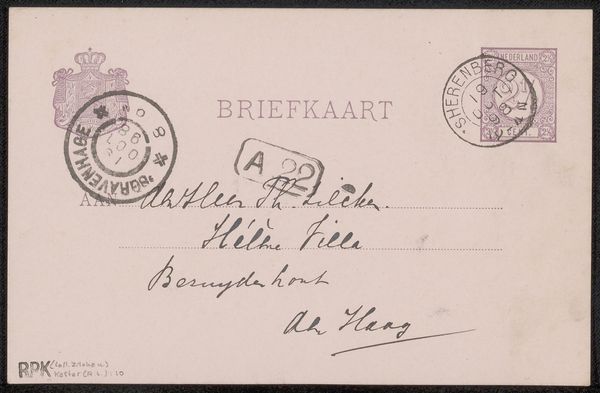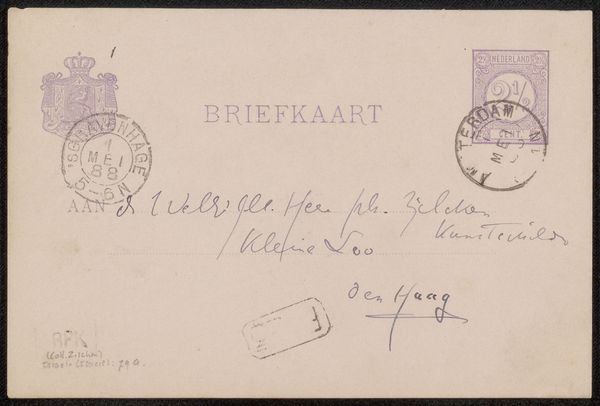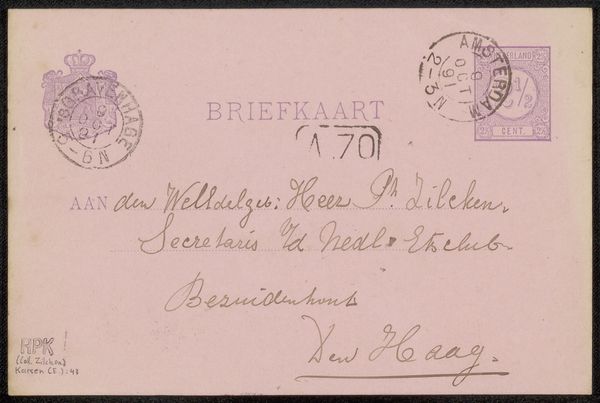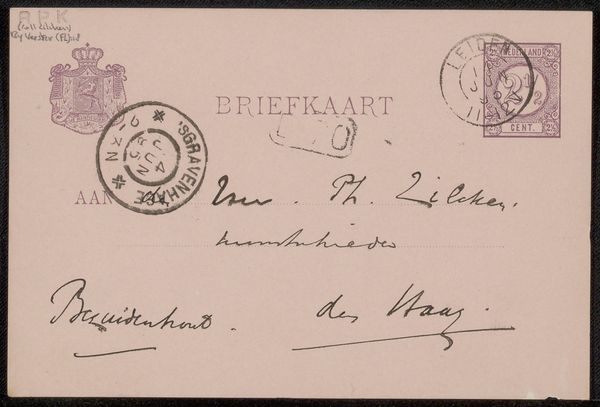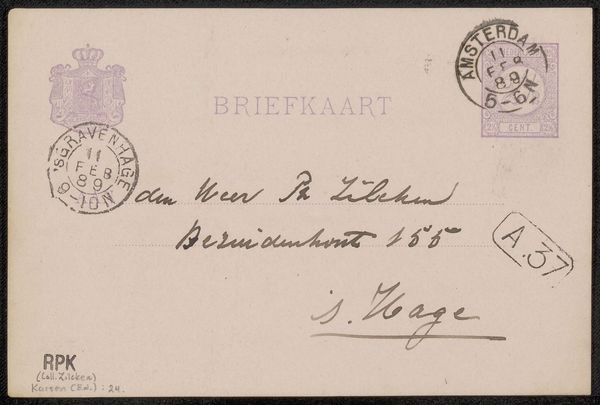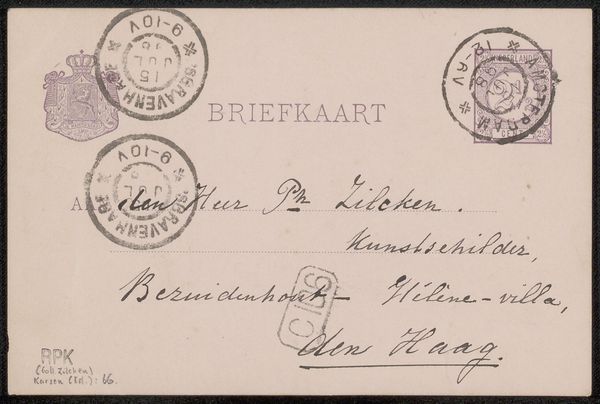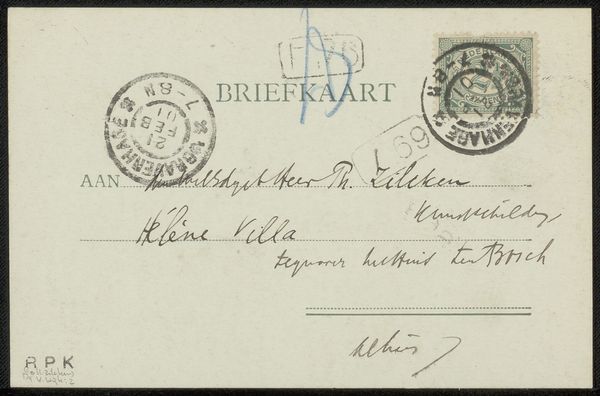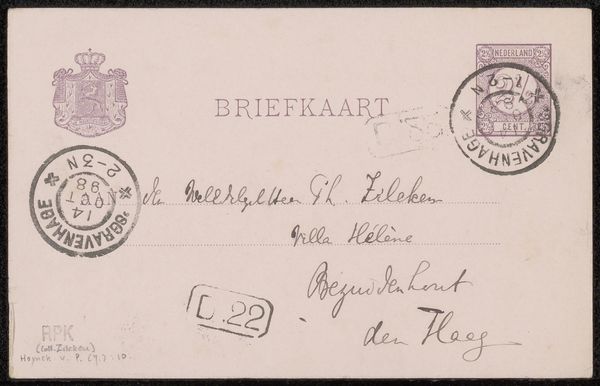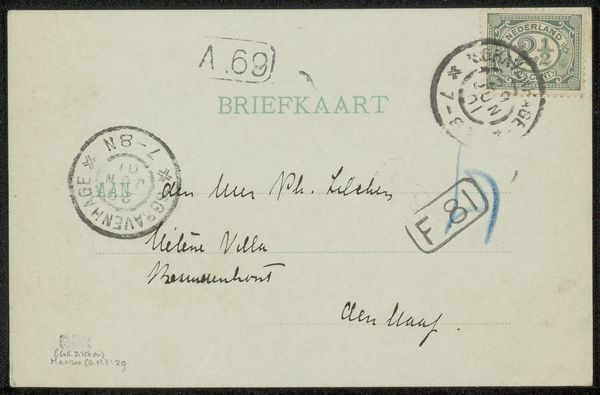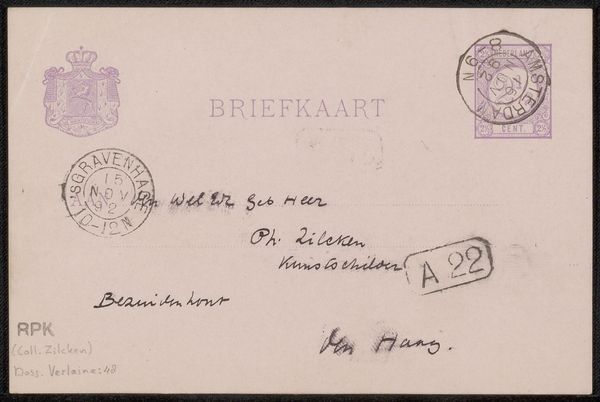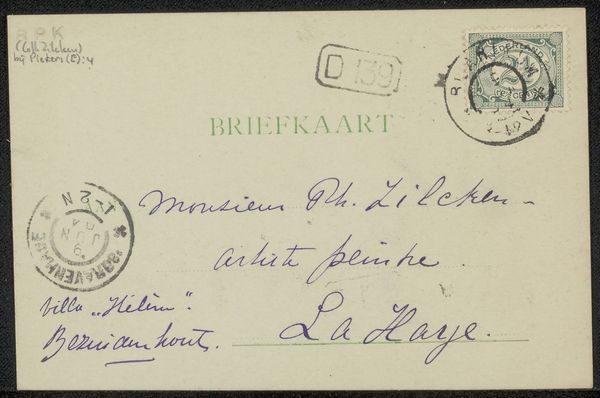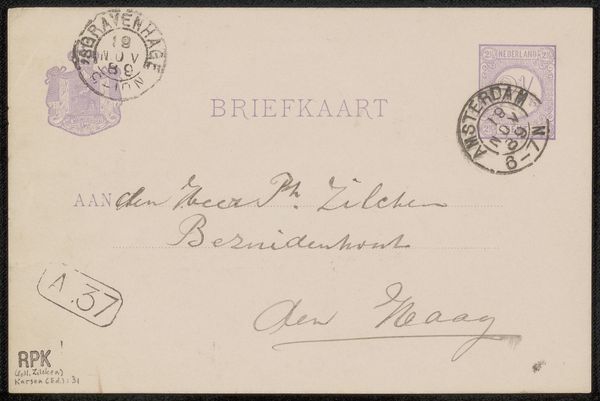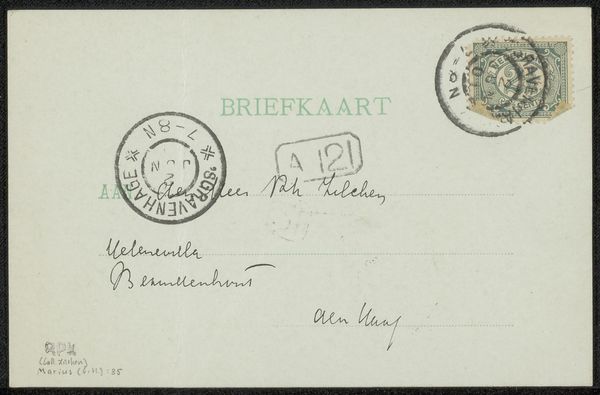
graphic-art, print, paper, ink
#
graphic-art
# print
#
paper
#
ink
#
post-impressionism
#
calligraphy
Copyright: Rijks Museum: Open Domain
Curator: Looking at this postcard addressed to Philip Zilcken from before 1899, attributed to Jan Toorop, I’m struck by how it captures the transition to a new century. It’s ink on paper, a very humble medium, but brimming with potential. Editor: There’s a delicate, almost ethereal quality to it, isn't there? The monochromatic palette and the fragility of the paper convey a sense of intimacy, a quiet whisper from the past. It feels less like a piece of graphic art, and more like a fleeting emotion, a fragile connection through time. Curator: Precisely. Toorop’s choice to use the readily available form of a postcard adds layers to its interpretation. As a functional object meant for circulation, it embodies a societal need to connect and communicate. See how he embeds official stamps, postal markings and seals to symbolize an existing and trustworthy infrastructure? Editor: Which in itself hints at the political dimensions—this wasn’t merely a personal correspondence, but a document that participated in larger societal frameworks. The handwriting especially points to social class, given how carefully Zilcken's name and address have been written out. This also gestures at a society rapidly modernizing, but not fully immersed in mechanized communication. Curator: Indeed. And if we look closely at the calligraphic flourishes, especially in the address and "Briefkaart" inscription, we see more than just functional script. There's an artistry here, elevating it beyond the mundane. The artist uses type of language almost like an official document, that speaks of legacy, family ties, the weight of one's social identity through lineage. Editor: It’s like Toorop imbued a seemingly simple object with a cultural significance beyond its intended use. Perhaps he aimed to critique and engage with systems of power and personal interaction, given the rising industrialization and burgeoning nationalism of that era. We must remember that such networks of letters were deeply embedded within these colonial and global power structures, something so seemingly small became an engine for broader forces. Curator: Absolutely. And in this context, the post card evolves into much more than just a letter - it becomes an artful record. I look to the imagery in order to extract clues regarding the values of this generation and society. Editor: It really makes you wonder about Zilcken's reaction upon receiving it! Curator: Indeed. A quiet moment of human connection, now permanently preserved. Editor: I like thinking about the historical echoes resonating in this deceptively simple artwork. It urges us to look closer, to challenge assumptions, and engage with visual culture's critical power.
Comments
No comments
Be the first to comment and join the conversation on the ultimate creative platform.
